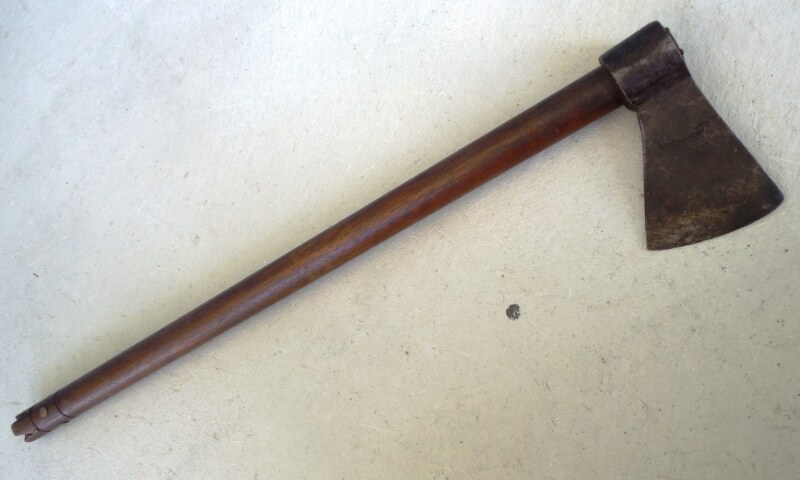Thimble Farm
32 Cal
Hi Everyone:
I am new to this forum but have been collecting axes/tomahawks for 35 years or so. Here is an article I just wrote with some images:
"Early Fall 1776. Somewhere in Westchester County, New York. Late Afternoon.
A man climbs a tall Oak still under the shade of its leaves, slightly auburn with the changing of the season.
He gets a better vantage point or, perhaps, a better shot….a crack and a patrolling jaeger goes down 250 yards out. The man scrambles to descend the Oak, the band in his broad brimmed hat soaked with sweat… no time to re-load his long rifle while running to catch up with his unit in retreat. The remainder of the jaeger company give chase with their hunting swords.
Perhaps the man was county militia or a rifle company levied out of Pennsylvania a year before. Either way, the man was left with little else to defend himself than his rifleman’s belt axe or “tomahawk” after his single shot long rifle was discharged. With no time to reload and the enemy quick in chase, the man was left with his axe to defend himself.
What was the rifleman’s belt axe?
Blacksmith forged, individual and distinct just like its owner. No two alike. It contained a variety of different polls (hammer, square, etc.) and blade shapes. Quick in a pinch as a tool for light camp duties, it was nevertheless a weapon. The poll acted as a counter-balance for more driving force into flesh during the chopping swing. All else fails, the poll end went into the skull."
I’ve attached an image of an original, hand forged rifleman’s belt axe from Pennsylvania, late 18th century for comment and questions.
I am new to this forum but have been collecting axes/tomahawks for 35 years or so. Here is an article I just wrote with some images:
"Early Fall 1776. Somewhere in Westchester County, New York. Late Afternoon.
A man climbs a tall Oak still under the shade of its leaves, slightly auburn with the changing of the season.
He gets a better vantage point or, perhaps, a better shot….a crack and a patrolling jaeger goes down 250 yards out. The man scrambles to descend the Oak, the band in his broad brimmed hat soaked with sweat… no time to re-load his long rifle while running to catch up with his unit in retreat. The remainder of the jaeger company give chase with their hunting swords.
Perhaps the man was county militia or a rifle company levied out of Pennsylvania a year before. Either way, the man was left with little else to defend himself than his rifleman’s belt axe or “tomahawk” after his single shot long rifle was discharged. With no time to reload and the enemy quick in chase, the man was left with his axe to defend himself.
What was the rifleman’s belt axe?
Blacksmith forged, individual and distinct just like its owner. No two alike. It contained a variety of different polls (hammer, square, etc.) and blade shapes. Quick in a pinch as a tool for light camp duties, it was nevertheless a weapon. The poll acted as a counter-balance for more driving force into flesh during the chopping swing. All else fails, the poll end went into the skull."
I’ve attached an image of an original, hand forged rifleman’s belt axe from Pennsylvania, late 18th century for comment and questions.












